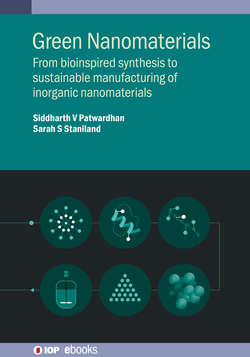Читать книгу Green Nanomaterials - Siddharth Patwardhan - Страница 22
На сайте Литреса книга снята с продажи.
2.4 Applications
ОглавлениеThere is now an ever-increasing demand for nanomaterials for numerous applications (figure 2.8) due to their enhanced/unique properties (above), increased surface area, increased reactivities and compatible size for interactions with molecular technologies. Examples range from personal care, such as TiO2 in sunscreen cream, to audio technology with magnetic nanoparticles in dampening ferrofluids for loud speakers. More sophisticated nanomaterials are now being specifically designed for a wide breadth of challenges, from curing cancer to purifying water: nanomaterials are becoming ubiquitous in every aspect our modern life as we move towards smaller, more compact and more sophisticated devices. There are many applications in areas such as energy (generation, conversion and storage), catalysis and gas sensing. However, this chapter is designed to provide an overview and not to cover the full range of applications. As such, this section will concentrate on the emerging and important field of nanomedicine, as this offers excellent examples that utilise the magnetic and optical properties described in section 2.3. While there is some cross over, we will discuss in vivo (in the body) magnetic materials for therapies, with some therapeutic optical materials too. Imaging enhancement material for both in vivo and in vitro (in a test tube) applications will explore materials with optical properties such as gold and CdSe, and in vitro bionano-sensing will be described which takes advantage of surface plasmonic properties. The final two sections will touch on different nanotechnological applications such as data storage and consumer products, to offer some breadth.
Figure 2.8. Schematic of the types of sectors and applications in which nanomaterials are used.
